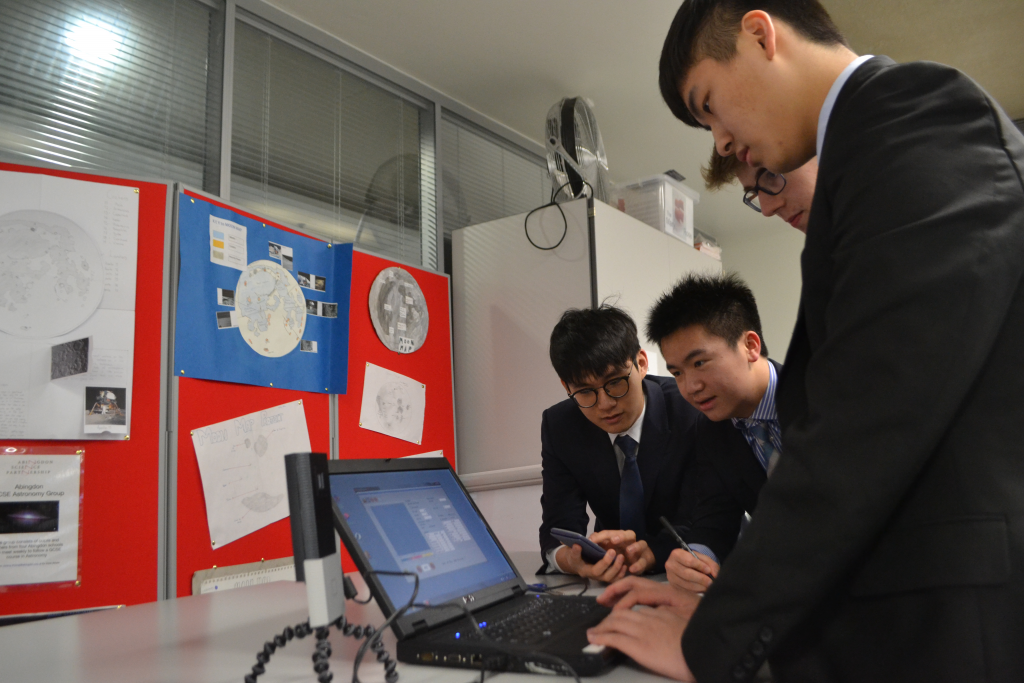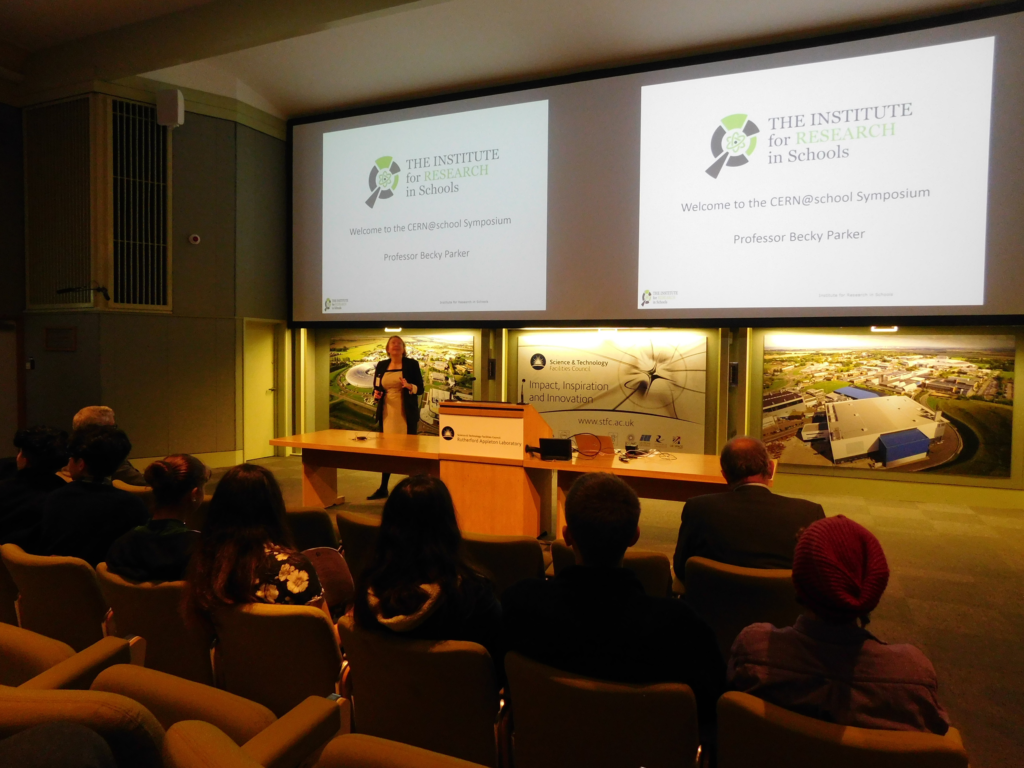
Do most pupils in most schools get any experience of how science really works in the world outside the classroom? Do most science teachers, even those educated to degree level, really know how practicing scientists go about their business? Standard school science lessons are designed to deliver known facts or methods within a short time interval, as just one of the many subjects covered in a normal school day. Nowhere in the science curriculum do pupils get the opportunity to work like real scientists, spending extended periods of time working on questions to which there are no known answers and developing the real skills that needed to discover the solutions. The Institute for Research in Schools puts pupils in direct contact with researchers from a variety of disciplines and encourages them to work together, with mutual benefits for both parties. The Abingdon Science Partnership, funded by Abingdon School, is leading the way in encouraging local schools to participate in these exciting projects and is providing a partnership model that can be replicated elsewhere.
What is IRIS?
The Institute for research in Schools (IRIS) is a charitable trust, launched in 2016, which makes cutting edge research projects available to school pupils and teachers so that they can all experience the excitement and challenge of confronting real, scientific problems. IRIS does this by making data accessible to schools; providing teacher training and resources and by lending out scientific research equipment for use both in lessons and student-led research projects. The full suite of IRIS projects and how schools can sign up for them is explained on their website http://www.researchinschools.org/ but in this article I will focus on a few of the key projects I have been involved in and how they have been implemented in schools as part of the Abingdon Science Partnership (ASP) initiative. The ASP is ideally placed to help schools to run IRIS research projects, having staff and laboratory facilities available as well as a strong foundation of partnership work in science between local schools across both independent and maintained sectors (https://www.abingdon.org.uk/abingdon_science_partnership). The ASP has recently been invited to set up and lead the Oxford IRIS Partnership, adding to the growing number of IRIS partnerships across the country, such as the IRIS Northern Hub based at Tapton School in Sheffield. Partnerships and individual schools who sign up to IRIS projects help to promote its threefold mission which is as follows:
- To increase the number of young people and teachers who engage with STEM research at school in a way that raises aspiration, participation and attainment so that more young people, especially those from disadvantaged groups, continue with careers in STEM
- To enable teachers to be connected as key partners in STEM research and so retain them in the profession
- To contribute new ideas and approaches to tackling global challenges including anti-microbial resistance, climate change, energy production, engineering and materials science
These aims can only be met, however, if there are practical ways for schools to engage with the projects within the restrictions of normal school routines and the workload of teachers. In the following sections, I will therefore discuss some details of example IRIS projects and give some insight into the practical issues associated with getting pupils to take on the open-ended challenges of realistic research activities.

CERN@School
This is one of several IRIS particle physics projects. Schools registering for CERN@School can apply for the loan of an MX-10 Digital Particle Camera, a device based on Timepix chip technology used in the ATLAS detector at CERN. The 1.4cm square chip detects the tracks of ionising radiation particles which can then be displayed via imaging software, provided on a dedicated laptop PC. All GCSE, A-level and equivalent specifications require students to be familiar with alpha, beta and gamma radiation and most schools will demonstrate their properties using Geiger Muller counters at some stage. The advantage of having access to an MX-10 detector is that it can distinguish between these types of particles and also display exciting events such as high energy muon tracks from cosmic ray events in the upper atmosphere. The impact of detecting a cosmic ray event, originating in deep space, in an ordinary lesson is enormous and entirely feasible, with several such events usually detected within a single lesson. The MX-10 detector is reasonably portable, provided the attached laptop can be accommodated, and robust enough to be used independently by interested pupils. It provides them with the means to carry out investigations of their own devising into sources of both natural and artificial ionizing radiation, limited only by their own ideas and imagination. The ASP’s CERN@School team includes pupils from three schools working together at the weekly Science Factor research club, which runs every Wednesday afternoon. The pupils have devised investigations of their own and in collaboration with particle physicists at the University of Oxford. The pupil team was asked to present some results of their investigation at the Royal Society’s annual Student Conference, producing a conference poster and experiencing ways in which scientists communicate their research to their peers.
"I enjoyed learning to analyse data and draw scientific conclusions as well as meeting with different students interested in science and distinguished scientists in their respective fields."
Ivan Leung, Y13 Abingdon School (boarder from Hong Kong)
Genome Decoders
This is a truly groundbreaking IRIS project, where the technique of training sixth form students to assist with research at the cutting edge of genomics is as much a part of the research as is the science itself. The project is led by a team at the Wellcome Trust Sanger Institute in Cambridge, who are sequencing the gene of the human whipworm parasite (Trichuris trichiura) which is the cause of several Neglected Tropical Diseases (NTDs) in developing countries. Pupil volunteers have been trained through online courses and discussion forums to annotate segments of the gene using an advanced software suite, called APOLLO. Year 12 pupils involved in the project are therefore encountering techniques they might not experience until post-graduate levels of study and may become involved in discoveries leading to treatments for debilitating diseases affecting millions of people across the world. Once inspired and trained, the pupils work at their own pace, being assigned individual segments to work on. In the initial stages of the project the scientists involved will be checking the accuracy of the work done by the pupils and refining the training methods accordingly, providing more input and instruction when required. The key issue to address in this project has been the initial inspiration and support of pupils early on in Year 12, before they have covered much of the necessary biological theory in their formal studies. IRIS schools have provided various levels of support to pupils, with the ASP’s approach being to organize regular meetings and problem solving workshops with teams at each of the three, partner schools. This has been facilitated through the availability of a member of staff with relevant degree knowledge who has been able to work with the pupils and anticipate many of the problems they might encounter. In this way, pupils have gained confidence and remained engaged, progressing to the stage at which they are annotating real gene sequences for themselves.